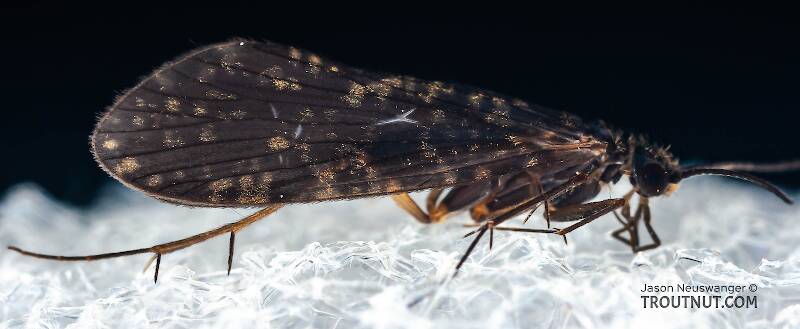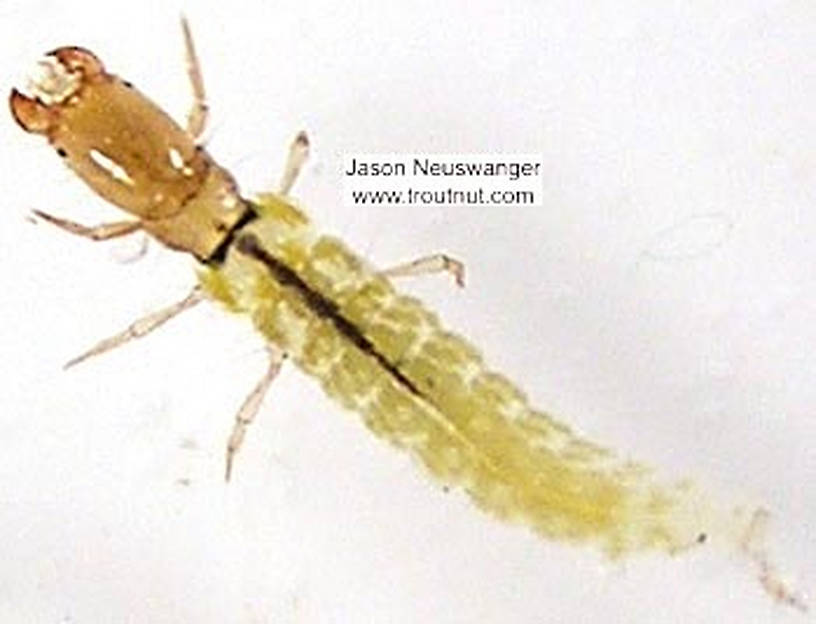
Hex Mayflies
Hexagenia limbata
The famous nocturnal Hex hatch of the Midwest (and a few other lucky locations) stirs to the surface mythically large brown trout that only touch streamers for the rest of the year.
Featured on the forum

As far as I can tell, this species has only previously been reported from one site in Oregon along the Columbia gorge. However, the key characteristics are fairly unmistakable in all except for one minor detail:
— 4 small yellow spots on frons visible in photos
— Narrow occipital spinule row curves forward (but doesn’t quite meet on stem of ecdysial suture, as it's supposed to in this species)
— Short spinules on anterior margin of front legs
— Short rposterior row of blunt spinules on abdominal tergae, rather than elongated spinules dorsally
I caught several of these mature nymphs in the fishless, tiny headwaters of a creek high in the Wenatchee Mountains.
— 4 small yellow spots on frons visible in photos
— Narrow occipital spinule row curves forward (but doesn’t quite meet on stem of ecdysial suture, as it's supposed to in this species)
— Short spinules on anterior margin of front legs
— Short rposterior row of blunt spinules on abdominal tergae, rather than elongated spinules dorsally
I caught several of these mature nymphs in the fishless, tiny headwaters of a creek high in the Wenatchee Mountains.

Troutnut is a project started in 2003 by salmonid ecologist Jason "Troutnut" Neuswanger to help anglers and
fly tyers unabashedly embrace the entomological side of the sport. Learn more about Troutnut or
support the project for an enhanced experience here.
Caddisfly Species Dolophilodes distincta (Tiny Black Gold Speckled-Winged Caddisflies)
What a weird species is Dolophilodes distinctus. It emerges year-round, and the female adults in the winter do not have wings. In the summer they do, and in the spring there is a mix.
This is the most important species of Dolophilodes in the East and Midwest. It is never an intense emergence, but it may be present at times of the year when nothing else is available.
This is the most important species of Dolophilodes in the East and Midwest. It is never an intense emergence, but it may be present at times of the year when nothing else is available.
Species Range
Hatching behavior
The pupae swim to the surface and then scoot across it to the shore to emerge. Swisher and Richards comment on the importance of this behavior in Selective Trout:When fishing to an emergence, the adult and emerger imitations are usueless. The angler must use a hackled pupa skated over the water toward shore.
Larva & pupa biology
Environmental tolerance: Prefers cold water
Specimens of the Caddisfly Species Dolophilodes distincta
1 Male Adult

This caddis species was dancing high over the stream, spaced a foot or two apart across most of its width, very much like Ephemera mayfly spinners but with more side-to-side motion mixed in. There were more than enough to get the trout interested, but I wasn't able to stick around until they fell on the water (if they did at all).
1 Female Adult

This is a really strange specimen. I would guess it's one of the dry caddis pupa that scoots across the surface of the water as a pupa rather than emerging right away. Its "wing pads" sure don't look right, though. Maybe they're deformed and that's why I was able to find this one as a pupa in the first place. It also looks like it might be a caddis adult missing its wings, but since I found three of them, that kind of rules out such an anomalous maiming.
I found this one and one other on a midstream rock. The previous day, I caught a similar creature kicking around on the water's surface.
This one died and shriveled a little bit before I could photograph it, but it's basically in its original shape.
I found this one and one other on a midstream rock. The previous day, I caught a similar creature kicking around on the water's surface.
This one died and shriveled a little bit before I could photograph it, but it's basically in its original shape.
1 Larva
Discussions of Dolophilodes distincta
Start a Discussion of Dolophilodes distincta
References
- LaFontaine, Gary. 1981. Caddisflies. The Lyons Press.
- Swisher, Doug and Carl Richards. 2000. Selective Trout. The Lyons Press.
Caddisfly Species Dolophilodes distincta (Tiny Black Gold Speckled-Winged Caddisflies)
Species Range
Resources
- NatureServe
- Integrated Taxonomic Information System
- Global Biodiversity Information Facility
- Described by Walker (1852)


